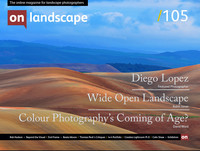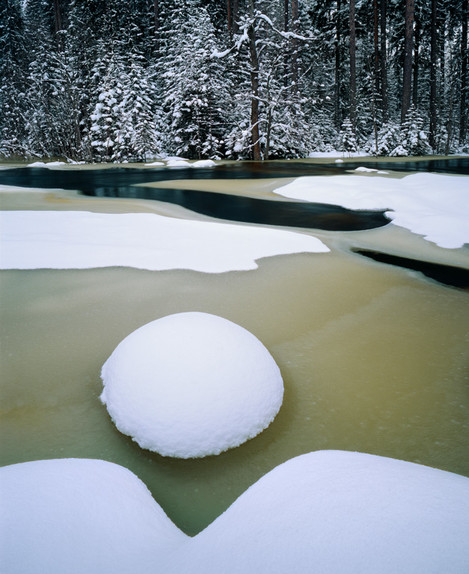Beata Moore talks about one of her favourite images

Beata Moore
Beata Moore is a professional photographer and author. Her work is diverse, from wider views to smaller details and abstract images, both in colour and black & white. She attained a postgraduate degree in botany and her photographs show a strong affinity towards the woodlands and the sea, but also a fascination with human ingenuity in creating architectural masterpieces.
It took me quite a while to decide which image I would like to write about in the End Frame, as there are so many images that influenced me in a significant way, and even more that are a pleasure to look at. It all became quite clear when Hans Strand name popped onto my screen. He is renowned for his aerial photographs of icebergs and glaciers but I always spend a little bit more time studying his beautifully balanced intimate landscapes.
The image takes me into a pristine, remote place untouched by human presence and its subdued light speaks to me with a quieter but powerful voice.
The choice of placement of all the elements in the frame here is superb. Snow cap sitting just above the V shaped snow in the foreground takes centre stage, while the “S” shaped river adds needed dynamics.
I feel Hans has a strong connection to nature and he brings out the best out of winter scenery in this shot. This quiet landscape encourages me to drop everything and get to the forests of Sweden that are so picturesque when covered in snow and ice. It is also a good example of rewards that await photographers when they engage more closely with the environment – the surrounding natural chaos turns into a perfectly organised visual treat and delicate shades of black and white show that nature photographers need to rely less on colour and more on lines, shapes and formes.
Hans’ tight and immaculate compositions make viewers very aware of aesthetic qualities of natural landscapes and no matter how complex his images are, they feel right. His consistent use of patterns, textures and most important, clarity resonates with the statement from his website: “nature is always true and never trivial”.
After reading a couple of interesting interviews with Hans, I understand how important intelligent composition is for him. Described by him as “hallelujah light” and large-scale landscapes are less interesting for him than intimate details, where smaller elements of nature, so often overlooked by many, take centre stage. I too feel less impressed with sensation and am connected with nature on a more personal level, although colour is still very important to me. My love of colour influenced heavily by the paintings of Turner and Monet is well seen in many of my nature images.
Perhaps I can see a glimpse of my precise architectural black and white images there? When I photograph buildings and cities, I search for lines and shapes, less for colour, and Hans’ images reflect just that; or does Hans’ technical quality take me back to geometry classes when drawing orderly perspective, lines and shapes kept me occupied for hours…
Whatever the reason, his images look unhurried and the almost architectural precision allows him to masterly interpret the world around him. Purity, precision, perfect balance of smaller elements of nature and placing great value upon careful composition in his images confirms a strong argument that methodical approach is the key to creation of compelling images and holding an interest of the viewers.


